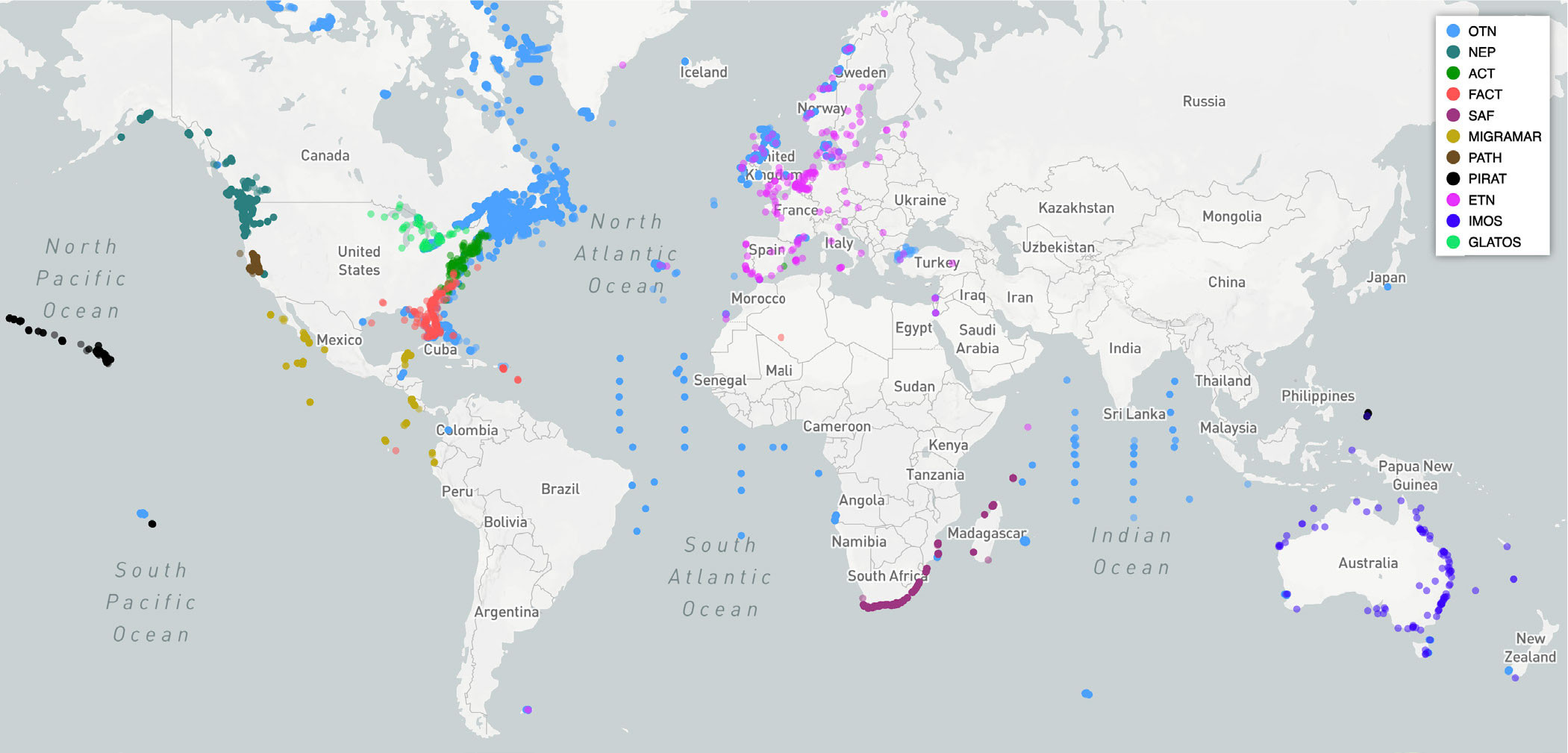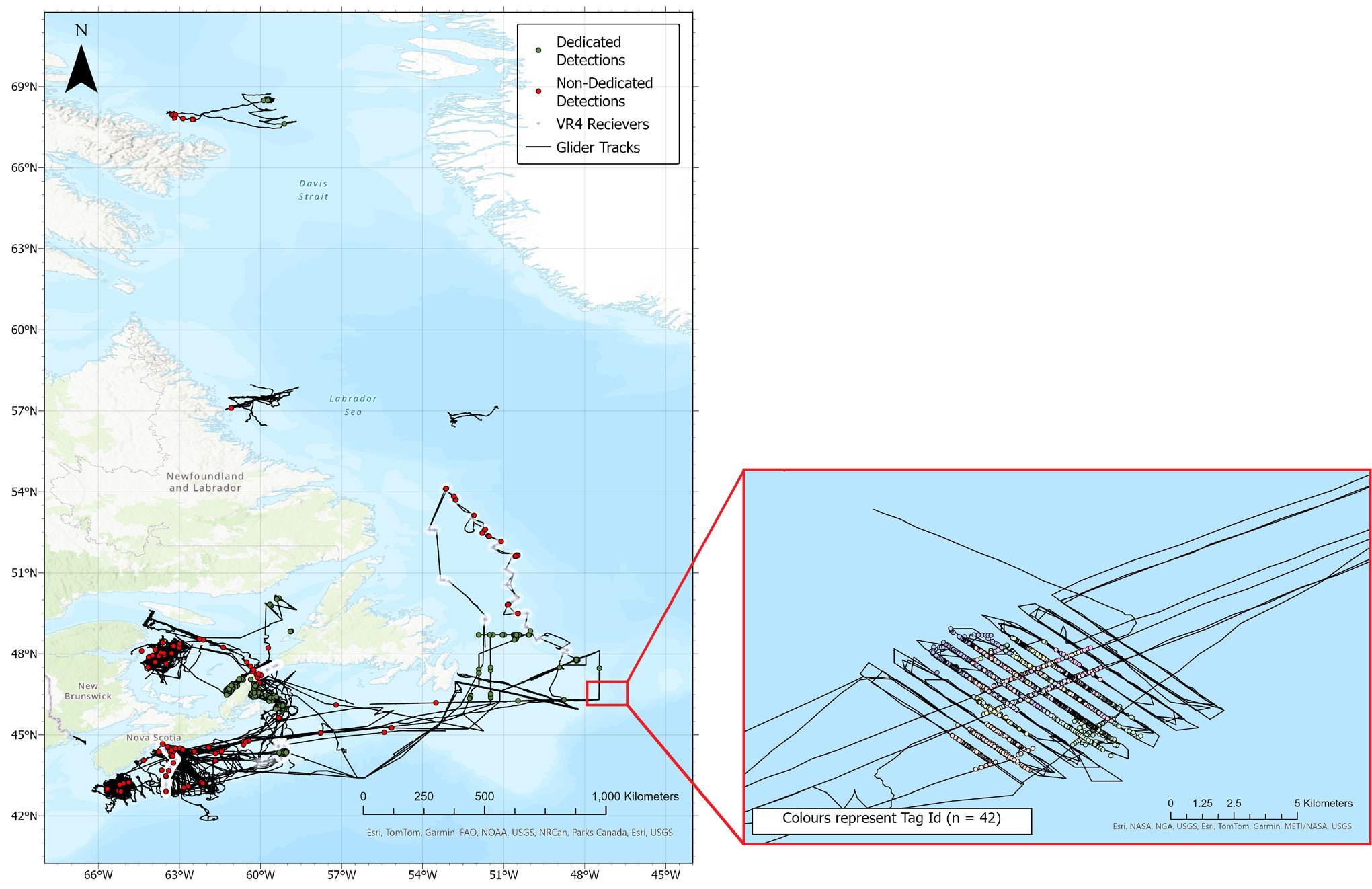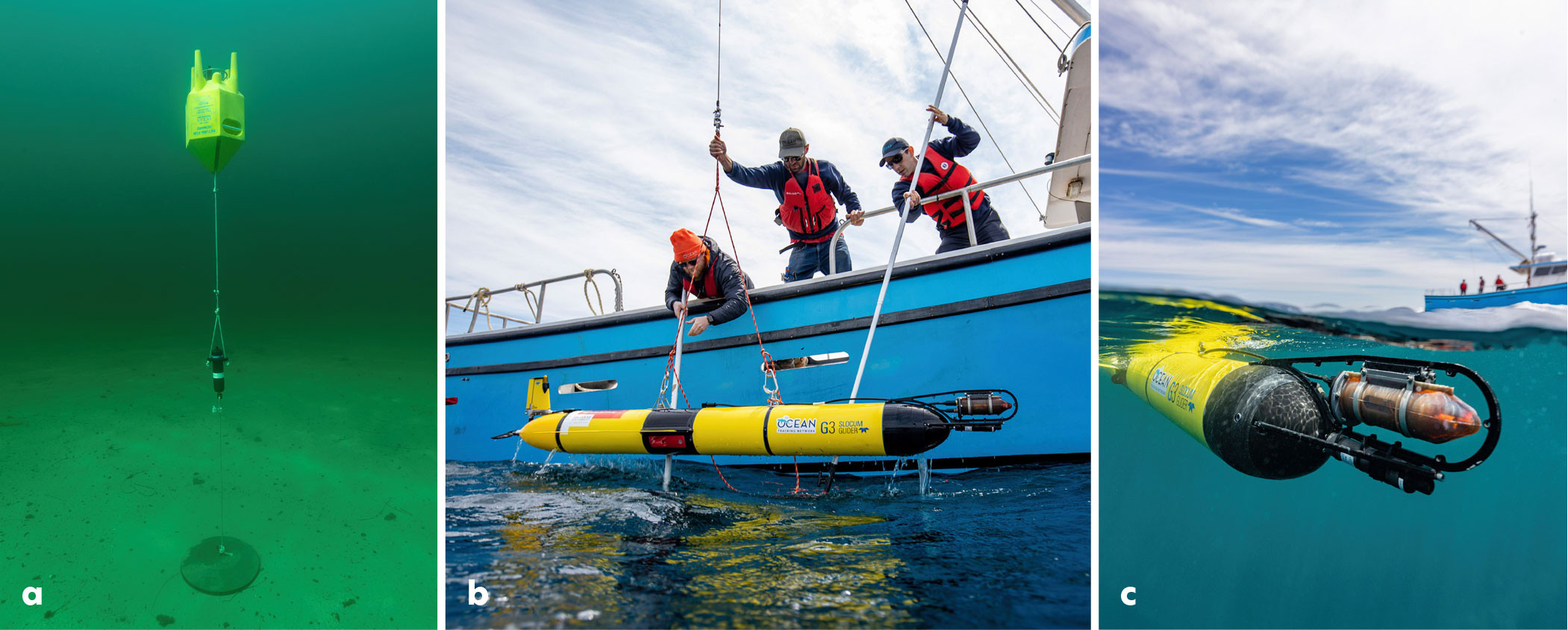Full Text
Critical gaps exist in the ocean science community’s biological observation capabilities (e.g., Canonico, 2024; Hassoun et al., 2024). Defining exactly what to monitor and how to obtain the necessary resources to do so are subjects of ongoing debates.
Many highly valued marine species migrate seasonally over long distances and cross international borders as they seek the resources needed to complete their life cycles (Matley et al., 2022). These species drive ecosystem processes, influence carbon cycling, and are critically important for food security and socioeconomic well-being of Indigenous peoples and coastal communities.
Mobile species’ ocean distribution and abundance patterns are changing rapidly and unpredictably, primarily due to anthropogenic impacts, including climate warming effects on fisheries, that make monitoring these changes and the factors driving them critically important (e.g., Pershing et al., 2021). As the migration patterns of valued species change, altering ecosystem structure and function and putting at risk the benefits that the migratory species bring to people in coastal communities, there is an increasing need to document these changes and the factors driving them in a timely manner to provide mitigation and adaptation capabilities. The relatively recent development of electronic telemetry technology has enabled researchers to address this need.
There are three principal types of marine animal tracking telemetry systems: satellite tags, data loggers, and acoustic telemetry. For cost and other logistical reasons, acoustic telemetry has become the most widely used (Matley et al., 2022). This technique involves fitting a tag that emits an acoustic signal carrying an animal’s unique ID (and in some tag models, secondary signals from tag sensors provide such measurements such as temperature or salinity). These signals are logged by acoustic receivers placed at different points in the ocean. Globally, >20,000 receivers are currently deployed (Figures 1 and 2) by many different research groups. Each receiver (Figure 3) has an omnidirectional detection range of about 800 m. Receivers frequently detect other researchers’ tagged animals, so a grass-roots effort developed within the telemetry community to share detections, thereby creating a global monitoring network (Matley et al., 2022), with the Ocean Tracking Network (OTN) playing a leading role.
|
|
|
|
|
|
OTN is a global aquatic animal tracking, technology, data management, and partnership platform headquartered at Dalhousie University in Canada. Funded by the Canada Foundation for Innovation as a Major Sciences Initiative, OTN operates an international network of acoustic receivers (up to 3,000 at any given time) that supports and leverages the efforts of the global science community. OTN has staffed, designed, and implemented a data system to collate, provide quality assurance and control for, curate, and distribute the acoustic telemetry data generated by participants in the OTN network. The system is a certified Associate Data Unit of UNESCO’s Intergovernmental Oceanographic Committee’s International Oceanographic Data and Information Exchange (ADU-IODE) and a thematic node of the global Ocean Biodiversity Information System (OBIS). More than 7,000 users have registered with the broader OTN data system, which is responsible for over 2 billion detection records.
The OTN network-of-networks federates data from 10 international partners (nodes; see Figure 1) who use the same database structure and workflows to manage data from their home regions. This node structure enables the efficient exchange of data among these networks, and an investigator seeking information about tagged animals can enter through any of these nodes and pull detections from all the participating nodes. OTN has additional international data partners that maintain independent data systems and enable exchanges with the family of OTN nodes.
OTN operates a fleet of Slocum electric profiling gliders and Liquid Robotics Wave Gliders to augment its animal tracking activities (Figures 2 and 3). Glider sensors (e.g., temperature, conductivity, dissolved oxygen concentration, chlorophyll, and others) provide data on environmental conditions that can be used to determine whether animals are attracted to or avoid particular ocean areas. The gliders can serve as dedicated mobile receiver platforms in places where it is too costly or logistically infeasible (e.g., heavy fishing pressure) to moor fixed receivers. They also routinely carry acoustic receivers to provide opportunistic detection of tagged animals. The Slocum gliders can carry passive acoustic monitoring (PAM) systems that can detect whale and other cetacean calls, enabling the monitoring of their presence (Figure 3).
Scientists monitor the presence and movements of marine animals for many different reasons. Examples include:
EFFECTIVENESS OF MPAs. For marine protected areas, acoustic telemetry is a valuable tool for determining whether animals remain within the MPA borders and receive the intended protection. OTN acoustic receivers have been deployed within protected areas in Canada and the United States to document the use of the MPAs by a suite of tagged species, including commercially important snow crab (Chionoecetes opilio), Atlantic cod (Gadus morhua), highly migratory bluefin tuna (Thunnus thynnus), and protected (US) or endangered (Canada) white sharks (Carcharodon carcharias). In Canada, where long-term monitoring plans for MPAs are now under development, current data from acoustically tagged species in MPAs is being used to help design future MPA monitoring strategies
RIGHT WHALES IN THE GULF OF ST. LAWRENCE. A calling whale is perhaps the largest and most powerful “acoustic tag” imaginable. OTN’s PAM-equipped gliders are supported by Transport Canada as part of a Canadian whole-of-government effort to protect migrating endangered right whales, many of which suddenly shifted their summer feeding distribution from the Bay of Fundy to the Gulf of St. Lawrence around 2016. In the Gulf, the whales encountered threats from entanglement in fishing gear and ship strikes, and in the 2017–2019 period an exceptional mortality event occurred, with 21 dead whales reported. OTN gliders are now patrolling the shipping lanes in the Gulf of St. Lawrence listening for whales, complementing aerial and other monitoring systems. Whale call detections by the gliders trigger management decisions that include mandatory ship slow-downs and closure of fishing areas. Since the monitoring program began, there have been no reports of right whale deaths in the Gulf of St. Lawrence.
PROMOTING CONSERVATION OF PACIFIC SALMON. Declines of multiple species of Pacific salmon (genus Oncorhynchus) in North America are of great concern because they support extensive Indigenous, commercial, and recreational fisheries. A variety of measures are being applied to help conserve Pacific salmon, including live release of specific species or strains taken in recreational fisheries. Many factors, including water temperature, fight time, aerial exposure, and hook wounding, could affect whether the released fish survive. In a comprehensive study that used acoustic telemetry to link fish survival to these factors, Hinch et al. (2024) identified the prime mortality drivers for caught-and-released chinook (O. tshawytscha) and coho salmon (O. kisutch). Their work has generated 15 actionable recommendations for managers and policymakers regarding ways anglers can modify their fishing practices to improve the conservation effectiveness of live release.




